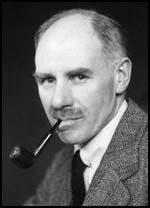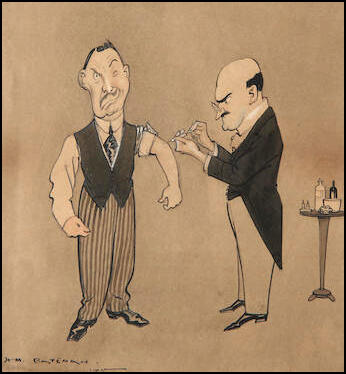Henry M. Bateman

Henry Mayo Bateman, the son of Henry Charles Bateman, was born to an English family in Sutton Forest, New South Wales on 15th February, 1887. His father owned an export and packing business in Australia but in 1889 the family returned to England.
Encouraged by Phil May he studied at the Westminster School of Art and the Goldsmith's Institute. On the recommendation of John Hassall he joined the studio run by Charles van Havermaet. His first cartoons appeared in The Royal Magazine and The Tatler. He began contributing to Punch Magazine in 1906.
On the outbreak of the First World War, Bateman joined the London Regiment but after falling ill with rheumatic fever in 1915 he was discharged. Over the next few years Bateman had cartoons published in Punch Magazine, The London Magazine, The Bystander, The Strand Magazine and The Humorist.

After the war Bateman became one of the highest paid cartoonist of his day and produced a considerable amount of work for advertising. This included campaigns for Wills Cigarettes, Moss Bros, Guinness, Shell and Lucky Strike. By the 1930s Bateman was recognised as one of Britain's leading cartoonists and was earning over £5,000 a year for his work. Bateman was one of the first graphic artists to adopt a cinematic approach. One critic has argued that Bateman episodic format was "closely parallelled in the silent movie, such as the slow build up to a climax or denouement, and a new emphasis on gesture and facial expression".
Bateman published several books including A Book of Drawings (1921), More Drawings (1922), Bateman (1931) The Art of Caricature (1936) and On the Move in England (1940). During the Second World War Bateman produced several posters for the government.
R.G.G. Price, the author of A History of Punch (1957) has argued that Bateman "probably did more than anyone to bring home to the reader that individual pen and ink lines could be immensely expressive of and by themselves." Mark Bryant has pointed out that Bateman "worked in pencil, pen, ink and watercolour on Canson paper... and was the "master of the cartoon story without words."
Henry Mayo Bateman died in Gozo on 11th February 1970.

